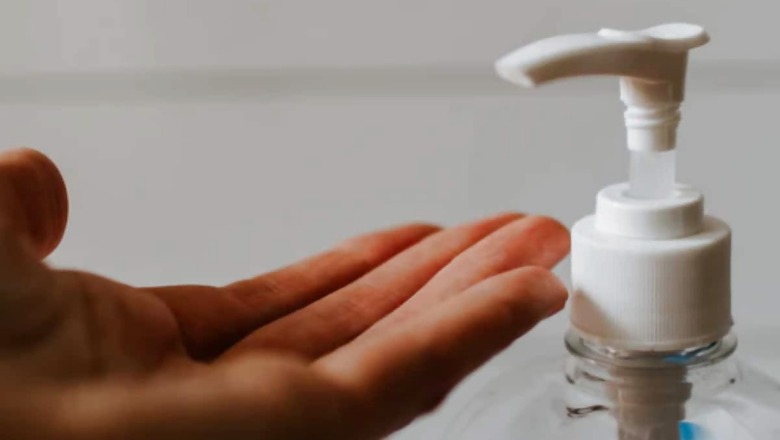
views
Despite all the strides made by humankind over the last few months, the COVID-19 pandemic is far from over. It is common knowledge by now that the SARS-CoV-2 virus, which causes COVID-19, can be transmitted through a number of mechanisms. The US Centers for Disease Control and Prevention (CDC) may still be unsure about airborne transmission, but respiratory transmission and surface transmission are possible routes of spread.
While direct inhalation of droplets containing the COVID-19 virus is likely and can be avoided by wearing masks when outdoors or in crowded places, surface transmission that could go undetected. The virus enters the body via the mucous membranes in the nose, eyes and mouth, and it can easily get there if you touch a contaminated surface and then proceed to touch your face without washing your hands first.
SARS-CoV-2 on the skin
Your skin ? especially the skin of your hands ? may act as the biggest carrier of SARS-CoV-2. Research conducted at the United States Army Medical Research Institute of Infectious Diseases in July 2020 had indicated that SARS-CoV-2 can stay on the skin for eight hours to 14 days depending on the temperature. This study said that the virus survives on the skin for eight hours at 37 degrees Celsius, for about four days at 22 degrees Celsius and up to 14 days at 4 degrees Celsius. In other words, it suggested that the lower the temperature the higher the survival time of the virus on your skin.
A new study, published in the journal Clinical Infectious Diseases, reveals that SARS-CoV-2 survives on the skin for nine hours, while the influenza A virus becomes inactive on the skin after almost two hours. The study found that both SARS-CoV-2 and the influenza virus were inactivated on the skin in just about 15 seconds when a hand sanitizer with 80% ethanol was used.
This clearly shows that using a potent, 80% alcohol-based hand sanitizer is the best way to kill the virus before it can enter your system. Washing your hands with soap and water for two minutes can also be equally effective. Hand sanitization should be done regularly to avoid COVID-19 infection.
SARS-CoV-2 on other surfaces
Your skin is a carrier and should be sanitized regularly, but you also need to keep other surfaces in mind ? after all, we are all surrounded by high-touch surfaces, from door handles to remote controls and switchboards. The study mentioned above shows that the survival time of the SARS-CoV-2 virus on other surfaces like borosilicate glass, stainless steel and polystyrene was about eight times more than that of the flu virus. A number of other researches have also tried to identify how long the COVID-19 virus stays active on various surfaces and the following are some estimates to keep in mind.
- Metal: Five days
- Glass: Five days
- Ceramics: Five days
- Wood: Four days
- Plastic: Two to three days
- Stainless steel: Two to three days
- Cardboard: 24 hours
- Copper: Four hours
- Aluminium: Two to eight hours
- Paper: Depends on the type but usually lasts between a few minutes to about five days
- Fabrics: Depends on the type but all fabrics can be easily disinfected if washed and dried properly
The best way to avoid surface transmission is to clean and disinfect all surfaces, especially high-touch ones, regularly. This disinfection should be done with a household cleaning spray, liquid or wipes with a sodium hypochlorite or bleach base. However, make sure that you wear gloves while using these cleaning liquids and wash your hands afterwards to ensure your skin does not get exposed to harsh chemicals.
For more information, read our article on How long can SARS-CoV-2 survive on different surfaces?
Health articles on News18 are written by myUpchar.com, India’s first and biggest resource for verified medical information. At myUpchar, researchers and journalists work with doctors to bring you information on all things health.




















Comments
0 comment